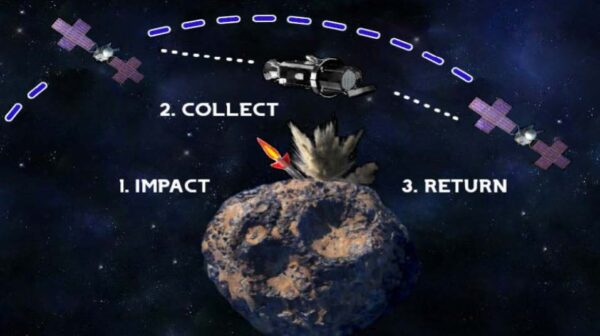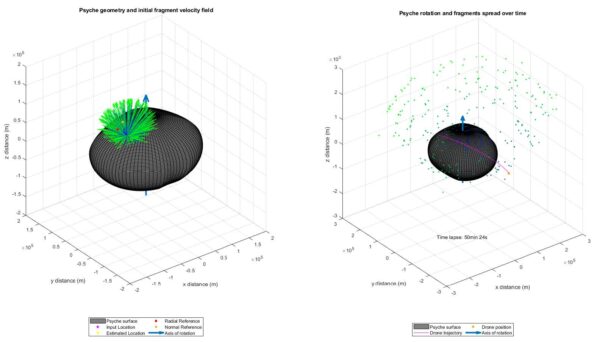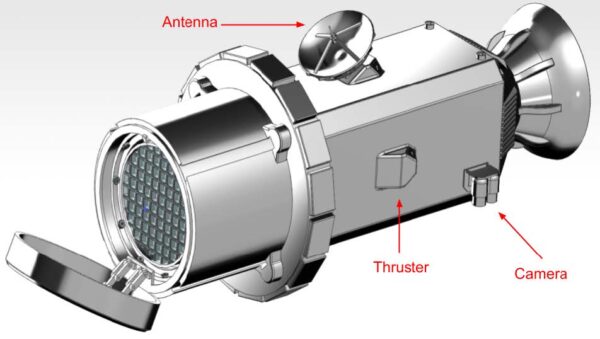Hypothesized Surface: Sample Return from Hypothesized Surfaces – OSU – A
“NASA Psyche Sample Return”
INSTITUTION
Oregon State University (OSU)
CLASS
Tungsten Class (2023 – 2024)
STUDENT TEAM
Laurel Bright Berman, Mechanical and Manufacturing Engineering
Portia Council, Mechanical Engineering
Leanne Fischer, Mechanical Engineering
Chenghao Li, Mechanical Engineering
Steven Nguyen, Mechanical Engineering and Material Science
Team Advisor
Dr. Sarah Oman, Oregon State University
Team Technical Advisor
Dr. Cassie Bowman, Arizona State University
PROJECT DESCRIPTION
This process took inspiration from NASA’s OSIRIS-REx sample collecting mission with its highly efficient TAGSAM mechanism (Touch-and-Go Sample Acquisition Mechanism: a robotic arm combined with pneumatics to blow up and collect particles). This mechanism eliminates the high cost and complexity of a system using a lander, a rover, and returning propulsion. Our three-stage approach similarly aims to achieve this efficiency with adjustments to adapt to Psyche’s highly dissimilar gravitational and metallic characteristics. An impactor will be sent to Psyche’s surface to create a spray of debris, which will be collected by a small rocket (drone) sent from a satellite in Psyche’s orbit. The drone will return to the satellite, which will travel back to Earth once the samples have been collected. Our group is primarily focused on the collector housed in the drone to acquire these samples.
The team conducted simulations of the debris spray to determine location and orbit for sample collection. These simulations informed the team of the best flight path for the drone to collect samples, and the expected mass of samples that will be returned for analysis.
The overall drone shape and capsule designs were inspired by NASA’s Stardust mission. The capsule on the front of the drone will contain the collection disk and prevent contamination by opening and sealing closed using mechanical joints and locking systems. The team designed a titanium alloy disk to collect the samples from the particle debris spray. The disk is double-sided to ensure that samples of varying sizes and properties are collected. Both sides will consist of a grid-like pattern to hold Aerogel, a lightweight solid used to slow high-velocity particles. One side of the disk is shallower to collect smaller particles at a higher orbit, while the other side has deeper Aerogel pockets for collecting larger samples at a lower altitude.

Figure 1. Impactor and Spaceborne Drone Concept without Active Surface Device.

Figure 2. Drone and particle positions over time analytical results.

Figure 3. Full drone with labeled external components.

